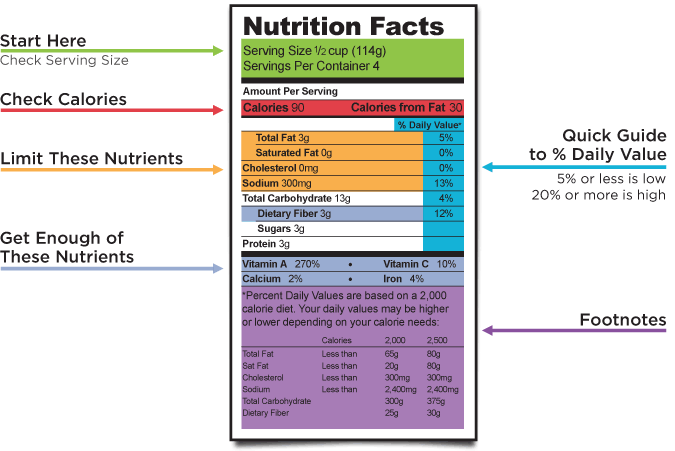The post Whole grain vs. Whole wheat: A Review appeared first on Andrea Miller MHSc, RD Consulting Dietitian.
]]>Reviewed by Andrea Miller MHSc, RD
We would like to welcome one of our new Nutrition undergraduate volunteer students, to our practice. This is Erika’s first blog post, for us.

Canada’s Food Guide states that half of our daily servings of grains should be whole grains. Whole grains provide us with more fiber, vitamins and minerals, than refined grain products. It is important to understand the difference between whole grain and whole wheat.
What is “whole grain”?
Whole grain means that the entire kernel of any type of grain has been used. The wheat kernel has three parts: the outer bran layer (which provides fibre), the endosperm (which provides minerals and proteins) and the germ (which provides B and E vitamins). Some examples of whole grains include barley, rolled oats, quinoa, spelt, brown rice or corn – in addition to wheat.

What is “whole wheat”?
Whole wheat also describes a fully intact kernel; however, it is specifically referring to wheat, and does not include any other type of grain. When buying whole wheat products, it is important to make sure the ingredients are listen as “whole” – otherwise it could be missing key nutrients from the removal of germ or bran layers.
Which is better for you?
Whole grains have been shown to lower the risk of heart disease, diabetes, stroke and some cancers as they provide the most vitamins, nutrients and fibre. The best thing to look out for when grocery shopping is the Whole Grain Stamp which indicates that all grains used in the product are whole. In addition, while shopping for both whole grain or whole wheat bread, it is important to check that it is a good source of fiber. Aim for breads that contain at least 4 grams of fibre per serving. Finally, as bread is known to be a source of sodium, try to choose breads with no more than 200 mg per serving.
Click here for more information on choosing healthy grains.
The post Whole grain vs. Whole wheat: A Review appeared first on Andrea Miller MHSc, RD Consulting Dietitian.
]]>The post Smart Shopping: Tips for eating well and saving money appeared first on Andrea Miller MHSc, RD Consulting Dietitian.
]]>April 1, 2016
By: Erin Ross BSc Nutrition
Reviewed by: Andrea Miller MHSc, RD
No matter what your budget it, saving money on groceries is a smart choice as the cost of food continues to increase. In 2015, Canadian consumers saw an increase in multiple food categories and this increase is predicted to continue into 2016. Researchers forecast that the cost of meat will increase another 2.5-4.5% and vegetables will increase another 2-4% . Eating on a budget does not mean sacrificing health, nutrition or flavour. Here are some helpful tips to use the next time you go shopping to help you save more and become a smart shopper.
BEFORE SHOPPING
Check what is in season. Fruits and vegetables that are in season are typically less expensive and more flavourful. During the colder seasons, think more “hardy” vegetables like carrots, cabbage and squash. Check out this link to see what’s in season now https://www.ontario.ca/foodland/page/availability-guide
Shop your cupboards first. See what you have on hand and what needs to be eaten first. You can plan meals this way as well. Plan a “Use-up-what-you-have” meal to use up items you have. Stews, soups and stir-fries are a great options for accomplishing this.
Make a list. Plan out meals for the week and stick to it. Impulse buys or making meals up on the spot can lead to spending more.
Plan out meals for the week and stick to it. Impulse buys or making meals up on the spot can lead to spending more.
Plan your destination. Check on line for flyers so see which stores have the best deals. Check out the app Flipp to get all you weekly flyers in one place! https://www.flipp.com/
Don’t go hungry. Shopping while hungry can lead to impulse buys and you craving sugary, unhealthy treats. Eating before shopping can also help you focus on the task and be able to shop for the best prices.

AT THE STORE
Shop the perimeter. The perimeter of the store is where the freshest, least processed foods are stocked (think fruits and vegetables, bread, meat, milks and eggs). Purchasing less prepackaged food can save money.
Look at the full shelf. There is planning that goes into the layout of the shelf and companies pay more to have their products in the prime spots. These prime spots are generally at eye level. Look above and below the name brand items for generic store brands for less expensive options.
Frozen fruit and vegetables. This can be a better option when fresh fruit and vegetable are out of season. They are frozen at their peak of freshness to lock in nutrients.
Purchase cheaper meat cuts. Buy cheaper cuts of meat and slow cook them for a stew. Cheaper cuts include chuck, blade and skirt. The higher collagen content of these cuts slowly break down making the meat perfectly tender and flavourful.
AFTER SHOPPING.
Cook once, eat twice. Make an extra serving to pack for lunch or dinner the next day. For example, make a huge batch of chili one night and use leftovers to pour over pasta the next day.
Do the work yourself. Buying a bag of whole carrots is cheaper then buying baby carrots. You can also try portioning out your own snacks. Each week, portion out your snacks instead of buying prepackaged crackers or hummus.
Freeze food. Stock on items on sale that can freeze well. There a lot of foods that freeze well; berries, bananas, leafy greens, yogurt, and cheese (shred or slice first).
The post Smart Shopping: Tips for eating well and saving money appeared first on Andrea Miller MHSc, RD Consulting Dietitian.
]]>The post How to Read Nutrition Labels appeared first on Andrea Miller MHSc, RD Consulting Dietitian.
]]>Reviewed by Andrea Miller MHSc, RD
Grocery shopping can be a very overwhelming experience for many of us! With so many aisles, millions of food products and so much confusing nutrition information to navigate through! To make healthier food choices to achieve overall good health, understanding nutrition labels is very important.
In Canada, nutrition labeling became mandatory for all prepackaged foods in December of 2007. Food labels are designed to provide consumers with the information they need to make healthier food choices.. This article will help you to understand how to read nutrition labels by explaining the meaning behind the numbers and what you can look for on the label, when trying to make healthy choices.

STEP 1: Serving size. The first thing you should look at and keep in mind while reading the other facts is the serving size. It is important to realize that the serving size given may not be the same as one serving according to Canada’s Food Guide and it may also not be the same as the amount you eat. Therefore, you must factor in how much of the food you eat, when determining the amount of nutrients that this food contributes to your actual intake. For example, if you think you would eat twice as much as the given serving size, remember to multiply all of the other values by 2.
STEP 2: Calories. Calories provides a measurement of how much energy you get from a serving of this food.
STEP 3: Percent daily values. The percent daily value tells you how much a serving of food contributes to your overall intake of the various nutrients listed on the label. The percentages are based on recommendations for a healthy adult 2000-calorie diet. Foods that contain less than 5% DV of a nutrient are considered low in that nutrient, while foods that contain more than 15% DV are considered high in that nutrient. For example, if you are trying to consume lower-fat foods, selecting foods that contain less than 5% of the fat DV will help you reach your goals. By comparing the %DV between foods for any nutrient, you can quickly decide which food is higher or lower in that nutrient.
STEP 4: Specific nutrients. It is important to know which nutrients we should limit from our diet and which nutrients we should consume more of. Some nutrients that we already consume in high amounts should be limited. These nutrients are fat, saturated fat, trans fat, cholesterol, and sodium as they may increase your risk of certain chronic diseases, like heart disease, some cancers, or high blood pressure. In contrast, some people do not consume enough dietary fiber, vitamin A, vitamin C, calcium, and iron in their diets. These are the nutrients we want to consume more of. Eating enough of these nutrients can improve your health and help reduce the risk of some diseases and conditions.
I hope you have learned how to better read nutrition labels and make grocery shopping for nutritious foods much easier! For more information and interactive tools on reading nutrition labels visit: http://www.hc-sc.gc.ca/fn-an/label-etiquet/nutrition/index-eng.php
The post How to Read Nutrition Labels appeared first on Andrea Miller MHSc, RD Consulting Dietitian.
]]>